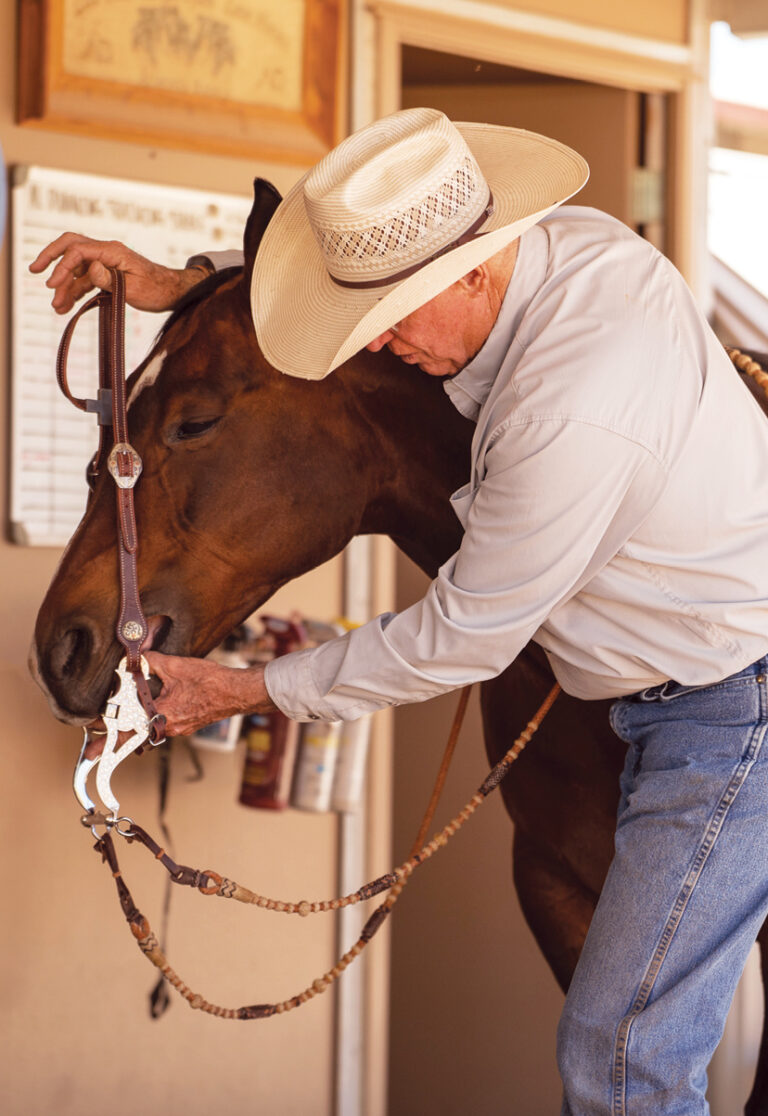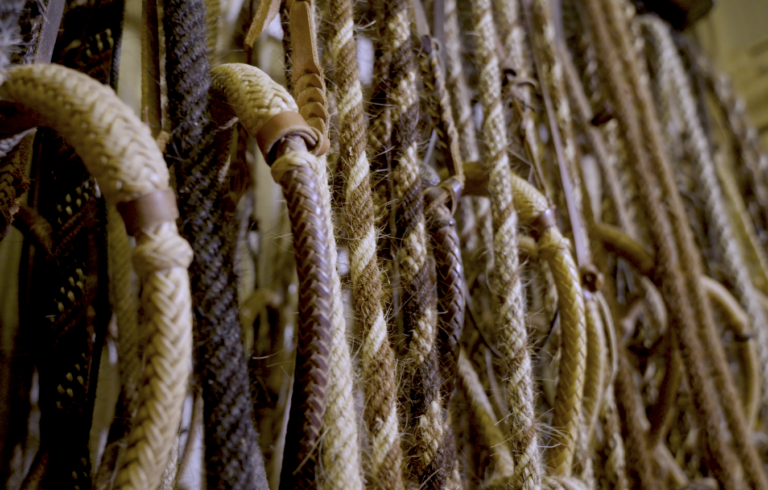No one knows exactly when humans discovered they could control their horses with some sort of device in the animal’s mouth, but ancient art, literature, biblical references (such as Psalm 32), and archaeological artifacts suggest that it was at least 3000 years ago.
The first horse bits were probably rawhide, then bronze, and eventually the iron or aluminum we’re familiar with today. Human experience with horses over the centuries has resulted in myriad versions of the horse bit, a relatively simple device, and just as many opinions as to how it should be used.
One fine trainer I know rarely uses anything but a snaffle horse bit; another, a very successful reining horse competitor, has a wall covered with so many horse bits it would put the displays in most tack shops to shame. He uses them all, believing finding just the right horse bit for a given horse at a given level of training is one secret to success.
My best advice? Keep an open mind! Don’t let someone’s generalization throw out centuries of experience by horse people whose livelihoods and very lives depended on the training of their horses.
Learn how bits work. The mouthpiece must fit into your horse’s bars or interdental space, the gum area between his front teeth and his molars.
Know that snaffles have no shanks and work by direct rein pressure.
Learn how to judge the leverage of curb bits by the ratio of the lower shank to the upper, the shape of the mouthpiece, and the slack in the curb strap.
And don’t jump to accept a marketer’s claim that a certain bit (or headstall device without a bit) is automatically more “humane.” Skill, timing, and sensitive hands are the measures of the sort of training that gets results without cruelty.
A snaffle used with insensitive hands is harsher than a mild curb used properly, just as spurs used with sensitive feet are gentler than bare heels thumping hard on a horse’s rib cage.
(For more about trail bits from Montana horseman Dan Aadland, see Sketches From the Trail, The Trail Rider, March ’12.)




